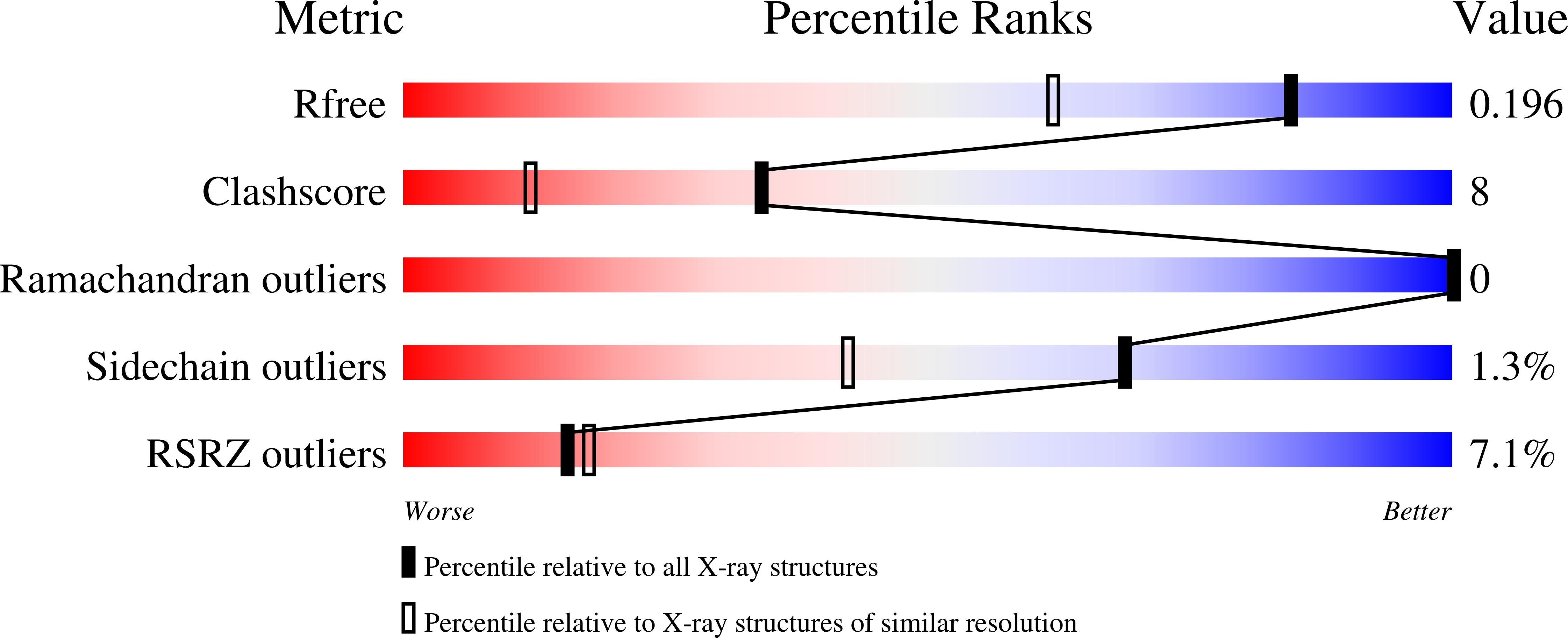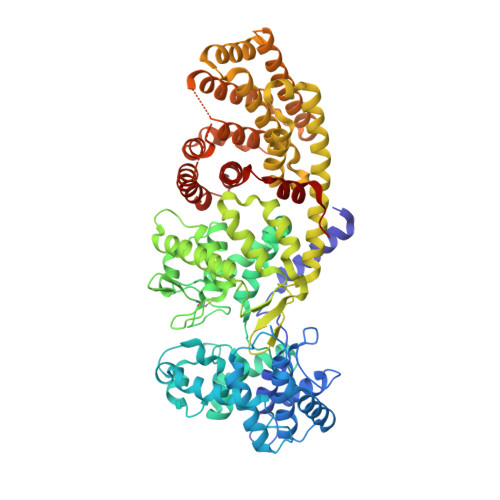1.55 angstrom -resolution structure of ent-copalyl diphosphate synthase and exploration of general acid function by site-directed mutagenesis.
Koksal, M., Potter, K., Peters, R.J., Christianson, D.W.(2013) Biochim Biophys Acta 1840: 184-190
- PubMed: 24036329
- DOI: https://doi.org/10.1016/j.bbagen.2013.09.004
- Primary Citation of Related Structures:
4LIX - PubMed Abstract:
The diterpene cyclase ent-copalyl diphosphate synthase (CPS) catalyzes the first committed step in the biosynthesis of gibberellins. The previously reported 2.25Å resolution crystal structure of CPS complexed with (S)-15-aza-14,15-dihydrogeranylgeranyl thiolodiphosphate (1) established the αβγ domain architecture, but ambiguities regarding substrate analog binding remained. Use of crystallization additives yielded CPS crystals diffracting to 1.55Å resolution. Additionally, active site residues that hydrogen bond with D379, either directly or through hydrogen bonded water molecules, were probed by mutagenesis. This work clarifies structure-function relationships that were ambiguous in the lower resolution structure. Well-defined positions for the diphosphate group and tertiary ammonium cation of 1, as well as extensive solvent structure, are observed. Two channels involving hydrogen bonded solvent and protein residues lead to the active site, forming hydrogen bonded "proton wires" that link general acid D379 with bulk solvent. These proton wires may facilitate proton transfer with the general acid during catalysis. Activity measurements made with mutant enzymes indicate that N425, which donates a hydrogen bond directly to D379, and T421, which hydrogen bonds with D379 through an intervening solvent molecule, help orient D379 for catalysis. Residues involved in hydrogen bonds with the proton wire, R340 and D503, are also important. Finally, conserved residue E211, which is located near the diphosphate group of 1, is proposed to be a ligand to Mg(2+) required for optimal catalytic activity. This work establishes structure-function relationships for class II terpenoid cyclases.
Organizational Affiliation:
Roy and Diana Vagelos Laboratories, Department of Chemistry, University of Pennsylvania, Philadelphia, PA 19104-6323, USA.


















